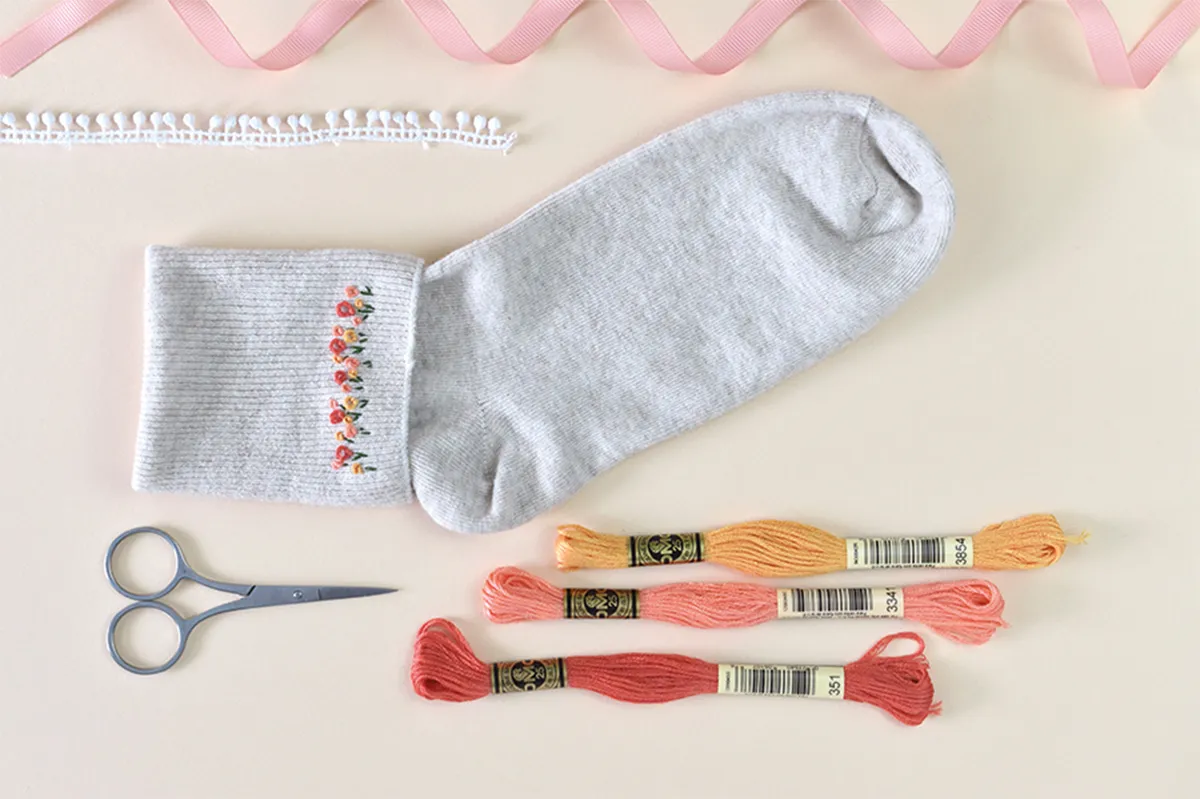How to embroider socks with Peking Knot stitch
Treat your feet to embroidered socks personalised with a dainty floral motif, stitched in Peking knots. Mollie Johanson shows you how it is done with this step-by-step embroidered sock tutorial.
Begin by practising working a Peking knot on a spare scrap of fabric before you embroider it onto your sock.
Adding embroidery to your clothes can give any item a new lease of life. Socks are a great gift too, so adding a touch of embroidery to them can make them extra special for the lucky recipient!
You will need
- 1 pair of socks
- Stranded cotton: coral, warm pink, yellow and dark green
- Scrap of cotton fabric: 2.5x7.5cm (1x3in)
- Iron-on double-sided fusible interfacing
- Basic sewing kit

How to embroider socks
Step 1

Come up from the back of the fabric. This will be the bottom of the stitch. Make a loop with the working thread with the loose end under the thread that’s attached to the fabric.
Step 2

Insert the needle just above the point where the thread exits the fabric, but don’t pull it through yet. Slowly pull the working thread until the loop is the size you want the stitch to be.
Step 3

Hold the loop in place with your finger as you pull the needle and working thread through. Be careful not to pull the thread too tight, especially when securing the end, otherwise the Peking knot will tighten on the surface.
Step 4

Now you are ready to embroider on your socks! Cut a 2×6.5cm (3/4×25/8in) rectangle of cotton fabric and press paper-backed fusible interfacing onto the back.
Remove the paper backing and fuse it to the inside of the sock near the cuff. This will prevent the embroidered area from stretching and distorting the stitches.
If your socks fold over like ours, be sure to stitch the design in the correct direction for when the cuff is folded.
Step 5

Working through the sock and the fused fabric, embroider a staggered row of Peking knots in varying sizes. Use six strands in coral, warm pink, and yellow embroidery thread. Use the pattern as a guide or stitch the Peking knot flowers freehand.
Depending on the stretch of your sock material, it may be best to stitch the flowers individually to prevent the threads breaking.
Step 6

To finish, embroider tiny stems and leaves under the flowers with straight stitch. Use three strands of dark green embroidery thread. Customise with your own colours to suit every occasion!
Give the gift of embroidered socks
Giving somebody a pair of embroidered socks is a great way to give a small yet thoughtful gift. It is a perfect option for those on a budget.
Keep updating your wardrobe with embroidery
Don’t stop at socks; you can update any garment in your collection to give it a new lease of life. Pair your new socks with these embroidered Converse.



